There's A Halo Under That Bandana
Is our need to turn David Foster Wallace into some kind of secular saint detracting from our ability to appreciate him purely as a writer of grandiose, impenetrable literature?
How Will Bostonians Observe "Patti Smith Day" Tomorrow?
I declare October 10 to be Patti Smith Day-grateful for her artistic contribution, leading the way for women in rock. pic.twitter.com/DUTM649SSX
— Mayor Marty Walsh (@marty_walsh) October 9, 2015
5. Complaining about “that fucking Marty Walsh from Dorchester”
4. Lighting some shit on fiiiire
3. Sleeping in late
2. Throwing a parade for Katie Nolan
1. Paying their cousin who works at the airport to get some weed out of that giant weed suitcase, it’s just sitting there, so much weed man
Coma, "Lora"
The fleeting illusion of belonging is made more cruel by the inevitable realization that you remain alone. Even at the moment of deepest connection with another person you are alone. You are always alone. New one from Coma out, though! Enjoy.
New York City, October 7, 2015

★★★★★ The clouds kept easing out of the way of the sun. When they were an almost-full sheet in the morning, the light came in below them from the east, and it continued unimpeded all day. A little gold was up in the trees. Traffic kicked up a glowing cloud of dust in the sunward middle distance. A woman on Fifth Avenue wore a vivid pink sweater, matched by the pink iridescing in her sunglass lenses. Sunglasses were everywhere. Colors reflected from one vehicle in the jammed-up crosswalk to the next, blending into confusion. The people rattling around the afternoon cross streets were in visibly elevated moods. A laughing teen girl gave her laughing friends the finger.
The Chicago End-Times
by Sam Stecklow

Sometime between early February and late May, the proprietor of a yoga studio read a “Best Yoga Studios” list that I had compiled as an intern at the Sun Times Network. Apoplectic that her business wasn’t included, she rooted out the email address of Chicago Sun-Times editor-in-chief and publisher Jim Kirk and chewed his ear off. The email made its way down the chain to me, but I suffered no repercussions. After all, I had just been doing my job: Sitting at a communal desk in a glass box in the corner of the Sun-Times office, writing “local” content for cities around America, most of which I had never even visited.
The Sun Times Network, which launched a year ago with a “presence” in seventy cities (now thirty-six) around the U.S., is part of a company called Aggrego, which is a part of Wrapports, LLC, a holding company that was created by a group of wealthy businessmen in late 2011 to buy the Sun-Times and its associated properties. (It is named as such because, according to a 2013 Chicago profile of Wrapports’s chairman and lead investor, Michael Ferro, it “signifies a merging of the ‘wrap’ of a traditional print publication with the ‘ports’ of tech ventures.”) When it was founded, Aggrego focused on creating “niche content” — mostly advertorial-type things — before transitioning into an ad-hoc wire service for the Sun-Times’ suburban papers, covering “high school sports, for example, and weddings,” according to an interview with its CEO, Tim Landon. (In the same interview, Landon said, “We do do school lunch menus, but you’re not going to build a big audience and engagement around school lunch menus. We want it to be almost Facebook-like.”) When covering weddings in the Chicagoland suburbs didn’t make enough money, after about a year, the plan was shelved and the suburban newspapers sold off to the Tribune Company.
The October 2014 press release announcing the launch of the Sun Times Network said that it was “designed to offer content in a manner similar to websites such as Deadspin and BuzzFeed, which aggregate news stories while offering additional commentary.” In an interview with Nieman Lab, Landon, who spent twenty-two years at the Tribune Company working on ad sales and classified services like Cars.com and CareerBuilder before being replaced during the disastrous Sam Zell era, said, “If I can take $10,000 a month, am I better off putting two or three kids against and creating lots of content? Am I better off hiring a known political writer that is controversial? Am I better off doing Facebook advertising? That’s the way you have to think about it.”

The Sun Times Network is broken up into a loose hierarchy. There are some fifteen-odd editors, and six-odd “interns,” who are assigned to two editors each. Both editors and interns have similar daily tasks: Scraping Twitter, Google News, and Reddit for trending stories in the cities they are assigned to — each editor has three to five, and each intern had six to ten — and writing short aggregations of news stories and social media posts that mostly consist of two short paragraphs of original work, with a big blockquote from the source story in between. Every editor and intern has a daily post quota ranging from twelve to sixteen. Multiple sources pointed out the futility of hitting a quota for each city. “The quota made it impossible to put any serious thought into any single post,” a former Network intern told me.
The “internship” is, like many in media, one in name only. I was one for four months. No current or former “intern” I spoke to for this story felt that the “intern” title adequately described the job they were doing, since Wrapports insisted that the “interns,” who were either just out of — or still completing — college, work at least forty hours a week, for which they are paid ten dollars an hour. (Editors make around thirty thousand dollars a year. Unsurprisingly, a former Network editor, who spoke on the condition of anonymity, told me he quit due to “overwork and little pay.”)
The lack of formalized structure at the Network is a constant source of consternation for Sun-Times reporters and editors, who worry that the shoddy work of the Network is affecting what little is left of the Sun-Times brand. A former Sun-Times employee of over a decade, who spoke on the condition of anonymity, told me, “It’s incredibly harmful [to the Sun-Times] to have the Network stories diluting the content. The Sun-Times tells its staffers, ‘We break news, we investigate stories, we look at political corruption.’ Those things take weeks and months of reporting, of original reporting, and constantly being on the phone, and dealing with sources, and if that’s what you’re trying to sell, then having a group of people who are writing snarky posts about tweets and memes that they’re seeing online makes the product worse. From a Network perspective, if that’s where they’re going, they could almost argue that having all this investigative watchdog stuff is making it worse, because people aren’t clicking on it as much as they’re clicking on the Steph Curry mom thing, or the Gronkowski did cocaine in a Las Vegas bathroom story.” Some employees openly complained, like former managing editor Craig Newman did in multiple tweets.
@kurtgessler that’s not really @suntimes — it’s the Aggrego people. We don’t control it out of our newsroom
— Craig Newman (@craignewman) December 24, 2014
In one sense, these complaints aren’t new: During the year that Aggrego operated as a wire service for the company’s suburban papers, including the Pioneer Press chain of weeklies, it was vehemently opposed by the Newspaper Guild — to the point that the union filed a complaint with the National Labor Relations Board. Aggrego staffers were calling veteran reporters’ sources, identifying themselves as Pioneer Press staff, and “asking about random stuff,” according to a reporter’s email that the Guild provided to Chicago Reader media columnist Michael Miner. In another email, the reporter followed up: “He must be one of those $9 an hour guys who will eventually take the union jobs over. Can he be a non-Guild eligible Wrapports employee and still publicly call himself a Pioneer person?”
Network staffers were concerned with the quality of work they were being asked to do, too. Marty Arneberg, a former intern, told me, “When I was applying to jobs, I would send very few Sun Times Network articles. I would mention in my résumé, forty hours a week I worked here, but I would not send them any examples. Because it was such a content factory, you just had to pump stuff out all the time. It was just like, get it out there, we need some pageviews now.” A former editor told me, “I wouldn’t read most of what I wrote if given the choice.” He added, “Spending more than thirty minutes on any article was generally frowned upon.” Arneberg told me that a “post got me the most pageviews of any post that I wrote and it was complete bullshit. It was a total hoax,” he said. “The weird thing is, when it came out that that was a hoax, nobody spoke to me. Nobody said anything, like, ‘Hey, you gotta watch out for that.’ It was just ignored.”
The question of whom, exactly, Sun Times Network is supposed to be for is one I asked everyone I interviewed for this story, and none of them could provide a good answer. I can’t either. It was assumed in the office we were writing for people who lived in Dallas or San Jose or Fargo or wherever, but we knew that there was negligible readership for each of the individual sites, with little of it even coming from the cities they were targeted at. Arneberg told me, “They had a few workshops on Facebook and Twitter, how to maximize likes or whatever. But nothing ever came of that. It was a totally failed mission. Our strategy was to get social traffic, and that never happened. It was just all Yahoo!,” which was most sites’ only significant source of traffic. If Yahoo! News didn’t pick up a story on its homepage, a site could be left with pageviews in the low hundreds for days on end.
So Network staffers, lured by the promise of bonuses for the top pageview-getters for the month, relied on keyword abuse. “It really depended on what sports and pop culture content the writers had,” a former Network editor told me. “Cleveland got very high traffic because of Lebron and Ohio State. Denver because Peyton Manning. Seattle because Russell Wilson. Milwaukee with Aaron Rodgers. Any city with a semi-lively sports beat. A few times when celebrities passed through and did something newsworthy, a single article could reach into the upper 100Ks of pageviews. Think Kim Kardashian, Duck Dynasty-type shit.” But mostly, they told me, “These poor editors are happy if ten people click on one of their social links.” According to a current Network employee, Yahoo! stopped picking up those stories in July, and without a strong social media following to bolster the Network up, it is flailing, only hitting around three hundred concurrent visitors an hour.
The Sun-Times’ social media accounts are now working overtime to promote Network stories, and they are slotted in right alongside Sun-Times stories on the Chicago Sun-Times homepage. “When the national stuff started being put onto the Sun-Times site, there was a lot of displeasure,” a former staffer told me. “One I specifically remember, the entire story was basically, ‘Caller to local sports radio show, says, “The Bulls could win if they get more alley-oops.” Radio hosts make fun of them.’ That was it. Those were the type of stories that reporters and editors got upset about when they would show up high up on the Sun-Times homepage, because there were actual news stories that reporters had been working on that were bumped down for that story to come in.” It’s extremely easy to tell which is which. Just skim to see if there’s any original reporting in the piece. If there’s not — and if the article is just a collection of tweets, or adheres to the “short intro, big block quote, short conclusion” formula I was taught on my first day — it is probably not from the Chicago Sun-Times.
This seems as good a place as any for this disclosure: I was fired by the Sun Times Network, so if you feel like you are reading a tell-all from a disgruntled former employee, well. On May 28th, I had handed in my two weeks’ notice after securing an internship at another news outlet in town. Later that day, I was struck by the utter fucking inanity of the post I happened to be working on — a “what to do this weekend” list for atlanta.suntimes.com, culled entirely from the local alt-weekly’s events calendar (sorry, Creative Loafing) — so I tweeted this:
anyway let me get back to my very important job pic.twitter.com/32PpPZsdR8
— europe stecklow (@samstecky) May 28, 2015
I had tweeted much harsher (albeit more veiled) critiques of the job before, but the next day, I was called into a meeting with the managing editor and an HR person for a one-minute meeting, in which the managing editor — the author of almost every Sun Times Network post linked to in this piece — told me it wasn’t “very smart” to tweet that and I was let go, two weeks and eight hundred dollars early.

The Sun-Times’ website has undergone four redesigns in the last two years (and one very talked-up political redesign), each less popular with the newsroom than the last. “[When the Sun-Times site] changed over from the newest of the redesigns to what it is now, to match the Network site, there was a lot of displeasure in the newsroom about that,” a former longtime Sun-Times staffer said. “I think a lot of employees were confused as to why so much time, and I assume money, to do three or four website redesigns, only to scrap the whole thing and go with this national Network, and then be told we don’t have any money. Well, you had enough money to do four website redesigns that you didn’t want, but you’re laying off employees. The money was just spent in a different place.”
When the Sun Times Network was launched, the Sun-Times newsroom was at once surprised and skeptical. A former Sun-Times employee told me that reporters and editors were asking amongst themselves whether Wrapports higher-ups (chairman Michael Ferro, CEO Tim Knight, and Aggrego CEO Tim Landon) had even thought this thing through properly. “This sort of rewriting existing content into a bloggy national format was sort of an oversaturated market to begin with,” they continued. “Once we sort of figured out what this was, a lot of people asked, ‘How did this cost fourteen million dollars?’ To hire interns and build essentially one website? It wasn’t 70-something websites, it was one website that was poorly done.”
The most recent redesign of the website now features a robust, entirely automated aggregation system that shows up below every post and even on the homepage, if you scroll for half a second. (It resembles a less-disgusting chumbox.) As more than one person has noted, oftentimes, the aggregations come from other local news sites — and in Chicago’s case, the Sun-Times’ direct competitor, the Tribune. Maybe, Wrapports doesn’t consider the Tribune to be a competitor on the online market anymore. And if the Tribune isn’t, who is? Landon threw the names of BuzzFeed, Deadspin, and even MailOnline around a lot in all-hands Network staff meetings. I don’t know if he’s noticed that all three of those sites are markedly different from the Sun Times Network in that they employ reporters who report and editors who edit.


The Sun-Times was never the best paper in Chicago, but it was one that, for most of its recent history, served an area that is often ignored or wildly sensationalized by Chicago media: the South Side. When the previous owner, James Tyree, bought the paper out of bankruptcy from convicted felon Conrad Black’s Hollinger International, he did it because he’s from the outskirts of Beverly, a neighborhood on the Far Southwest Side, and he wanted to preserve a South Side institution, according to a former Sun-Times employee. By contrast, the same employee said that Michael Ferro, who functions as the de facto owner of the Sun-Times, spent his teenage years in the wealthy suburb of Naperville and lives in the expensive and lifeless Gold Coast neighborhood, so he doesn’t care. “I think he’s been embarrassed by the Sun-Times, without really understanding what it is. He’s got a bunch of North Shore friends who don’t read it. It’s not important in the business world. It’s a gritty, urban, crime and fire and investigation daily newspaper. And that’s absolutely a hundred and eighty degrees from where his mindset’s at.”
In September 2012, the Sun-Times launched Splash, a glossy entertainment brainchild of Ferro’s, headed by a former PR executive. It hired as columnists such luminaries as Jenny McCarthy, who wrote a column claiming that she had never been “anti-vaccine” after using her celebrity to espouse anti-vaccine views for years; Lupe Fiasco, who was paid a thousand dollars for a sub-three-hundred-word column about how his father once said he could put all of Chicago’s skyscrapers together into a big robot; and possibly the most-hated man in Chicago, Jim Belushi. Of Splash, which is still around, a former Sun-Times employee told me, “There was still hope in the newsroom that well, not everything he’s done has been a bust.”
Four months after Splash, the Sun-Times launched Grid, a Sunday business magazine and vertical on the website seemingly targeted at young people; its content was mostly short and bloggy. Sun-Times editor-in-chief Jim Kirk, who had been the business editor at the Tribune, informed longtime business reporter (and union negotiator) David Roeder, along with the paper’s two other business reporters, that they would now be working at Grid, and as a result, losing their union status. Ferro’s original name for Grid was Plaid, a name he was convinced was “hip,” before lieutenants convinced him otherwise. (Never mind the already-existing publication Chicago Grid, whose owner accused Wrapports of trademark infringement.) The grand plan for Grid was not dissimilar to the original Aggrego and then Sun Times Network models: a national content agency, providing local audiences and publications with specialty business content. How Grid actually manifested, briefly and only in Chicago, was as a publication that, in addition to quick aggregated content and a number of features, gave Michael Ferro’s rich friends cover stories, according to a former Wrapports employee who worked on it.
After the Newspaper Guild filed charges, the three original Sun-Times reporters were given general assignment beats and shifted back to the Sun-Times. The remaining editor and staffers continued to produce the much-diminished Grid — a vertical on the website and two pages in the weekday paper consisting mostly of aggregated wire stories — until the end, in January 2014. Former Sun-Times media business columnist Lewis Lazare wrote in an obituary that it was in trouble from “almost the moment it debuted.” Ferro had told Crain’s in 2012, “We’re going to be increasing the business section exponentially.” Roeder left the paper to work for the Illinois Department of Commerce and Economic Activity, and there is no longer a business section in the Sun-Times.
Last October, the Sun-Times and NBC Chicago co-published a story about now-Governor Bruce Rauner, who was then on the campaign trail, allegedly telling the CEO of a company that he sat on the board of and which was funded by his private equity firm that he would “hurt [her] and [her] family.” He allegedly continued to another board member, “I will make her radioactive. She will never get another job anywhere, ever. I will bankrupt her with legal fees. I don’t know if she has a family or not, but if she does, she better think twice about this.” The Rauner campaign shot back at one of the story’s reporters, longtime Sun-Times political reporter and then-Springfield bureau chief, Dave McKinney, whose wife is a Democratic political consultant, something which the Sun-Times knew and had no issue with. The Rauner campaign sent a long document to McKinney’s editors, culminating in a demand for a disclaimer at the bottom of the story regarding McKinney’s wife.
Editor-in-chief Jim Kirk responded immediately, calling the efforts of the Rauner campaign a “sexist,” “spurious” “attack.” Yet McKinney was pulled from his beat, and a story he’d written about Pat Quinn’s Neighborhood Recovery program was yanked from the Sun-Times website. McKinney was put on leave for almost a week, something he described as “a kind of house arrest” and “pure hell.” Kirk began trying to convince McKinney to give up his political beat — one he’d been on for almost twenty years — and move him somewhere else in the paper, something McKinney refused. After he got a lawyer involved, he was reinstated, but was immediately told by his editors that he shouldn’t have a byline on a follow-up story to the original one, after which he quit the paper.
McKinney detailed all of this in a public open letter to Ferro. McKinney was very popular in the Sun-Times newsroom, according to a former employee, and the whole situation, combined with the fact that shortly after McKinney left, the Sun-Times reversed a three-year-old policy to not endorse political candidates and endorsed Rauner (without even meeting with Pat Quinn) further soured the relationship between Sun-Times management and the newsroom. The former employee told me, “There was definitely a perception [in the newsroom] that Ferro, most likely, was trying to get his buddy Rauner elected.” Bruce Rauner owned ten percent of Wrapports until he divested in April 2013, and, as of November 2013, owned at least nine hundred thousand shares of Merge Healthcare, a struggling health care IT firm that Ferro was the chairman of from 2008 to August 2013. Ferro stepped down as chairman after apologizing to shareholders for “very disappointing second quarter results”; he made almost two hundred million dollars after IBM purchased Merge for a billion dollars earlier this year.

According to a former Sun-Times employee, Ferro has become uninterested in the newspaper, and is looking to sell it. Notably, the name “Wrapports” has been completely removed from the print newspaper. But who does that leave the paper to? “I don’t think Tim Knight has any fucking clue what he’s doing, and I’m not saying he’s stupid, but maybe he’s not CEO material?” a former employee told me. “Maybe he doesn’t really understand how a media business works. Over at the Tribune, he was a lawyer, a mergers & acquisitions guy. Then he goes to Newsday, and just starts cutting. And then he comes here, but what does that mean for a media executive? He basically shot to the top as a guy who doesn’t understand newspapers. You can lay everything at the feet of Tim Knight. I think he’s skirted a lot of bullshit over the last few years.”
Tim Knight resigned earlier this week as the CEO of Wrapports to become the president of the Northeast Ohio Media Group, which publishes the Cleveland Plain Dealer, cleveland.com, and the suburban Sun News papers. NEOMG is owned by Advance Publications, the owner of Condé Nast, American City Business Journals (the ubiquitous bizjournals.com/[city] publications), and sixty-odd local newspapers around the country. Its local newspaper arm is most notable for layoffs and cutting the number of days many of the previously-daily newspapers publish on.
According to Michael Miner, Knight will not be replaced. Jim Kirk, Tim Landon, and Paul Pham, who runs the business side of things, will all report directly to Ferro. Miner tried to spin the news with a positive light. He credited Knight with bringing twelve pages of national USA Today content to the print paper, of which a former Sun-Times employee said, “I don’t think they care about having national content. They just want more pages, they wanted to be thicker, because they probably heard some feedback saying the paper’s too small. It came right on the heels of us cutting a bunch of people, and then you expand the newshole. They’re trying to do the same thing with the Network, which is demand that everybody write a billion stories a day because that’s the panacea. That’s how we’re gonna get pageviews, that’s how we’re gonna get cheap CPM ads, that’s how we’re gonna fix everything, right?”
Former managing editor Craig Newman told me, “I hope that this is good news for the Sun-Times and an end to the failed mishmosh of an experiment that is the Wrapports/Aggrego/Sun Times Network. However, coming on the heels of recent staff departures and continued gutting of the core of the company, the Chicago Sun-Times, it seems more like a rat fleeing a sinking ship — a ship sinking in no small part because of the rat.”

Wrapports seems to be running out of options. Ken Doctor speculated to the Tribune that the Sun-Times is “winding itself down as a paper,” even though this is where almost all of the revenue comes from. Additionally, the only newspaper Wrapports owns that makes money is the Reader, the once-legendary alternative weekly that, too, has been slashed and burned. It has largely shifted longer features to web* from the print paper, making it little more than a glorified events calendar with a few columns, two of them syndicated.
Wrapports netted a little over $23 million from selling the suburban papers to the Tribune company, about $20 million of which covered outstanding debts, leaving the company with about $3 million in cash from the deal. “The board is basically done, and has been done for a while,” a source said. “They’re not shutting it down yet, but whatever money they’re able to scrape together around there is… that’s it.”
People have been saying that the Sun-Times wouldn’t make it another year since time immemorial — through the ownerships of Rupert Murdoch, Conrad Black, and the rest — but this time, it feels real. It would be a pity if it is. The Sun-Times still has the strongest reporting on City Hall, the South Side, education, and crime of any daily news operation in Chicago, and there are a lot of talented people still clinging on. It just needs a rich benefactor who isn’t, in the word of a former Sun-Times employee, a “fuckwad.”
Photo by David Ohmer
*This piece originally stated that the Reader no longer runs features in print; that was a slight mischaracterization; additionally, it should be mentioned that Grid staff published a number of quality in-depth stories alongside its aggregation and nepotistic cover stories. An earlier version stated that Wrapports was paid $3 million for the suburban papers, when that number is how much cash they were left with from the deal. We regret the errors!!!
Kaitlyn Aurelia Smith, "Bobbing Beams Of Light"
This track is like one of those lamps that gets increasingly bright over a set period of time so that you emerge from your slumber gently and with a sense of serenity rather than abruptly and full of homicidal rage. How much happier would everyone be if we woke up and weren’t wracked with dread over the day to come and disappointment that we were stuck having to see it through? Much happier, right? I guess that’s some kind of impossible dream and we will continue to meet each morning with sorrow and fear, as has been the case since time immemorial, but it’s nice, every now and then, to pretend for a couple of seconds that things could ever be different. Anyway, there’s a whole backstory to this song that you can check out if you like, or you can just appreciate it as is. Unlike the remainder of your days, with music you still have a choice. Enjoy.
New York City, October 6, 2015
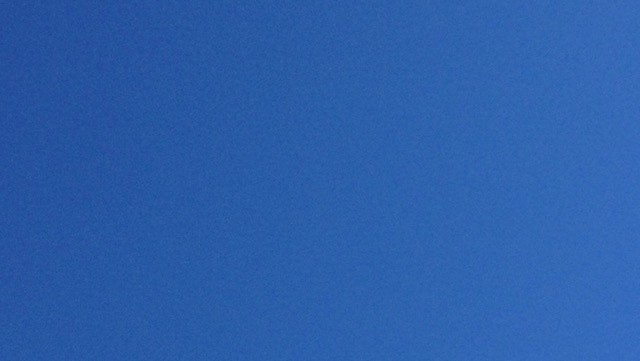
★★★★ A bird cheeped and trilled somewhere along Broadway. A shine was on the asphalt; the sky had attained a still deeper blue, making the buildings look close at hand. Full sun came down Fifth Avenue, and bits of sun bounced into the depths of a shaded mid-block. Raised wreaths on a facade stood out, as did the bricks on the scar where a missing building had once touched a wall still standing. The architectural details caught the eye even through the window, deep indoors, across the street. After the sun was out of view, the bright blue of the sky was still reflected in the leaves on the treetops.
Twitter Thanks You For Your Service

There are two stories about Twitter that are really just one story told from two different points of view. There’s the Twitter that studies its users, observing their habits and formalizing their behaviors into features. This is the Twitter that turned manual retweets into a button; the Twitter that watched its users use hashtags and then turned them into a core feature of the service and a part of the language of the entire internet. Then there’s the Twitter that invited app developers to build apps for iOS, Android, Windows and Mac OS, before eventually either acquiring or building native apps of its own, allowing developers to live but explicitly marginalizing them, in some cases out of business.
In both stories, Twitter is a rational party acting in its own best interest — it didn’t need to defend itself because it could correctly say, in most cases, that it was making Twitter a more effective product. The difference lies in the distinction between a user and a partner: a party that gives and takes time and content and a party that actually turned what it gave to Twitter, and what it took back out, into money.
Here’s a third version. In 2011, Twitter introduced embedded tweets. This too was an observed behavior — Twitter screenshots had been showing up in web articles for years, and third party embedding services were growing. The announcement blog post laid out the official rationale:
Every Tweet has a story that’s more than just 140 characters. It has an author, mentions @people and #topics, contains media, and has actions you can use to share or join the conversation. It’s a dynamic piece of media, and we believe that everyone should be able to view and interact with Tweets on the Web in the same ways you would from any Twitter client.
So began a strange and fruitful era of Embedding Things From Twitter: posts aggregating loathsome responses to news events; posts using tweets as kicking-off-points for arguments; posts embedding tweets to display the expensive media contained therein; posts making sense of breaking news stories by linking together tweets and other media. Tweets, it turned out, were useful tool for the web, as little modular content units. All the while, less visibly, Twitter provided an ambient news and information context from which all kinds of news was consumed, written and published elsewhere. (Non-video embedding thrived for these few years of exploding traffic and awkward tension between platforms and websites. Instagram, Quora, Imgur.)
Four years later, Twitter is making arguments about how its audience may actually be bigger than Facebook’s, “depending how you look at it.” CFO Anthony Noto told a Deutsche Bank conference last month:
We have other audience numbers that no one talks about. If you add them up, it’s a big number. In fact, in some scenarios, you could argue that it’s bigger.
He’s referring to people who see tweets outside of the main feed: on TV, for example, or on the main page while not logged in. Or they see the tweets embedded elsewhere, in thousands of stories viewed by millions — or, Noto seems to suggest, billions — of people.
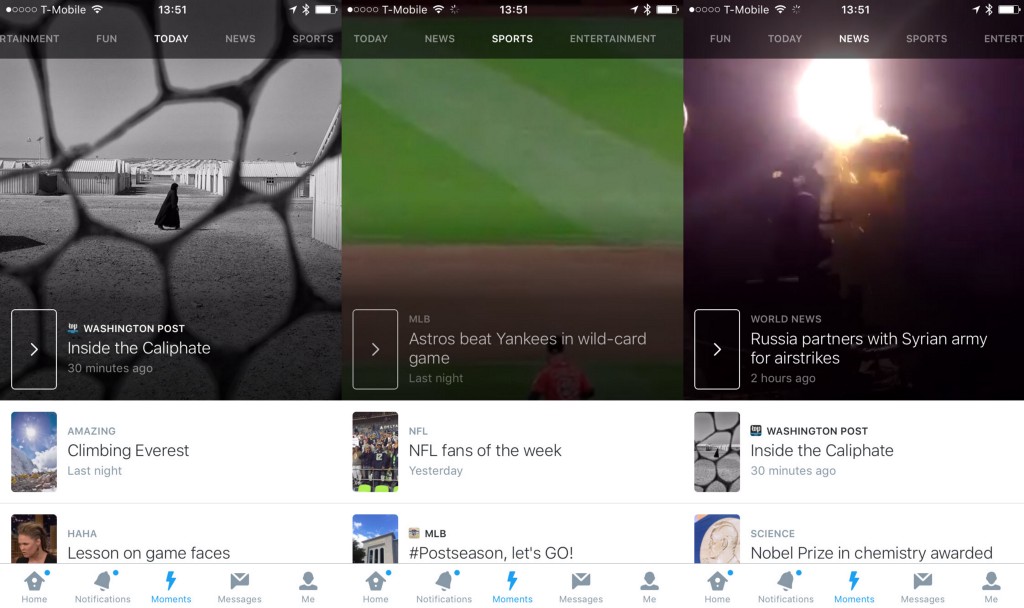
Twitter’s Moments have been characterized as a way for Twitter to reach an audience of people that might otherwise not use the service at all — a sort of Silent Majority of non-users who would appreciate Twitter if only they could approach it from some as-of-yet undiscovered angle. This might sound like wishful or even delusional thinking, to assume that your service is so good that the reason more people don’t use it is because they’re just confused. But it’s less ridiculous if you’re talking about people who you already claim to have a relationship with — those vast crowds of people who see tweets all the time, just somewhere else.
Twitter watched countless websites turn its tweets into Extremely Monetized Content. Now, it’s trying to figure out how to do some of that job itself. Its version of a publication is privileged on both ends: its aggregators have a fuller view of Twitter than any user; its viewers can see it in fewer taps and through a nicer interface than any story linked from within their timelines, AMPed or not. It’s not quite like when Twitter pushed out app developers, though the manner in which a number of apps have survived is probably instructive. Nor is it quite like when Twitter elevates a user behavior into a feature, though the instant wide use of those features is instructive as well. It’s closer, maybe, to the third, lesser-told version of Twitter’s inevitable platform consolidation: The dozens of link shorteners made redundant by t.co; the TwitPics and Yfrogs made to seem like spam by Twitter’s own image hosting. But it’s not quite that, either — that is, if we grant that the Twitter platform really is much larger, and looser, than previously imagined. Which… lol?

Moments is currently a minimalist curated scan of what Twitter is talking about. Not all of Twitter. Moments is not a window into Twitter’s many cultures; it is precluded from going meta or self-referential in the way Twitter users so often do, and which the feed-focused version of the service encourages. It is a standardizing, gentrifying force; if it favors one Twitter culture, it’s the Twitter of brands — that is, the Twitter that gets recommended to you daily via email if you sign up, follow nobody, and leave. This is Fallon country. We’re building from there.
As for internal categorization, like a publication it is divided into verticals, assembled by humans — some (many?) of whom worked previously as editors and aggregators at websites. It even has editorial guidelines! Under the header “BIAS, ACCURACY, AND STANDARDS,” Twitter says:
Individual moments should be free from bias. We will use data-driven decision making when choosing Tweets around controversial topics, and highlight the Tweets already receiving the most engagement on Twitter. On topics which reflect public debate, we will select Tweets that represent all sides of the argument or story where feasible. Twitter should not advance its own viewpoint, but rather reflect the discussion as it appears on our platform.
Actually, it’s about ethics in Twitter curation, the post does not quite continue, but may as well. That these are impossible guidelines is a hint at a coming conflict that I’m not sure anyone has quite figured out: as publications assimilate into platforms, and as platforms, in an effort to capture some of the energy and attention garnered by said publications on their turf, attempt to redefine the role of an editor/curator/reporter in terms that are most beneficial to them, we’ll have to re-litigate old arguments about control, bias, voice and balance, with higher stakes and less of a sense of accountability; the defendant, now, is simply insisting it isn’t liable. A first look suggests that the Moments approach to editorial judgement is learned, too: Its vague and primitive sense of what is and isn’t political (I’m sure opponents would challenge the unquoted “right-to-die” language here, for example); its implicit distinguishing between explicitly supporting or criticizing something, which is bad, and merely celebrating it, which is… fine?

Is Moments good? I don’t know. A sports “Moment” made sense to me; a collection of hashtagged Vines was both crammed full of Vine’s most popular and most irritating characters and also managed to be almost completely white; some posts read like volunteer branded content, which you can both complain about and recognize as a characteristic reading experience of this moment, but which suffers tremendously from lack of context. Exuberant celebration of consumption, branded or not, shares well. Aggregations of the celebrations serve no function, culturally or mechanically, inside Twitter.
There is no scenario in which a selection of Twitter posts gathered together to tell a story is both compelling and without a point of view. The result looks like this, which…. what have I gained by scrolling deep here? What more do I know about this horrible story? Even if it did implore me to find out more, it doesn’t give me an obvious path to do so.

Creating a publication at such a high tier within a platform is almost too obvious an idea. A publication of publications must be better than any single one, right? A view from above is wider than a view from the ground, or something? That’s sort the idea behind Reddit’s Upvoted site, which has none of the material advantages of a feature-level publication like Moments but which at least has a coherent audience — or a few — to which it can cater. Moments has a much more diffuse audience, which is either its problem or its point, depending on what Twitter wants from it, and how it changes. A broad Aggregator Of Record that treats Twitter as its source is an appealing idea in the abstract, and I suppose could be made into something that seems worth digging into — a sort of approachably massive constant archive to compliment the timeline’s approachably chaotic churning context. But no publication has been able to thrive on Twitter, or on any social network, without understanding the way its posts relate to users’ identities, politics and self-image. The concepts of neutrality and balance are, in the context of Twitter, much less about rules than what they allow posters to project about themselves to their followers. Moments does not operate in that space, it skims from it.
Maybe Twitter finds a way to customize Moments — to aggregate or produce enough content-of-content material to shove tailored things in front of people that they’re more likely to interact with in a way that we will faithfully equate with caring. They do it everywhere else, why not here? (POTENTIAL NEW TWITTER SLOGAN? Twitter: Why Not Here.) This was the original plan, I think? So maybe they just need some time.
You can already see conflicting pressures: between the arbitrary standards Twitter has set for Moments, to be “even-handed,” and what actually gets you to swipe to the end. It’s easy to perform something that looks like balance on a story most readers, or curators, haven’t engaged with before, or often. But what happens next time someone walks into a crowded room with a loaded gun? Who is left reading that story without a powerful sense of what it means?
The Moments that make the most sense in the current configuration often inhabit a celebratory-but-somehow-not-”biased” space. All-Day Breakfast At McDonald’s Starts today? How fun, I love McDonalds, and so can you. Celebrating Twilight’s 10th Anniversary is a fun activity for people who have positive feelings toward Twilight. I’m sure the Moment aggregated around The Oscars, which are implicitly Good, will be effective. What’s entertainment? What’s news? Twitter: Welcome to the slippery slope of editorial guidelines! Everyone is very angry here, always.

Twitter isn’t the only platform trying to figure this out right now — the temptation for a platform to create a feed of feeds, a publication of publications, or some kind of god-mode consumption device is strong. Instagram’s curated tags are less explicitly newsy but absolutely compete with publications that use Instagram as a source. Snapchat’s Live Stories have no embedded Snapchat to compete with, which makes things easier for them, and content partners are relegated to a different tab. The temptation to create a new space between your platform and your hundreds of millions of users must be powerful. There’s an element of corporate fantasy here: what if all these people were our audience, not each other’s?
Facebook recently released Signal, a tool that gives reporters a top-down view of what’s happening on the Facebook and Instagram platforms. It’s a sort of infinite trending topics screen, and it feels powerful, though reporters have struggled somewhat to figure out what to do with it, beyond what they did with prior tools like Newswhip and Crowdtangle (on which Facebook Signal is based). That is: aggregate the hell out trending stories that aren’t yet spent. It’s also a depressing reading experience, both overwhelming and yet somehow dishearteningly narrow. Some screenshots from the second I finished typing this sentence, sight unseen.
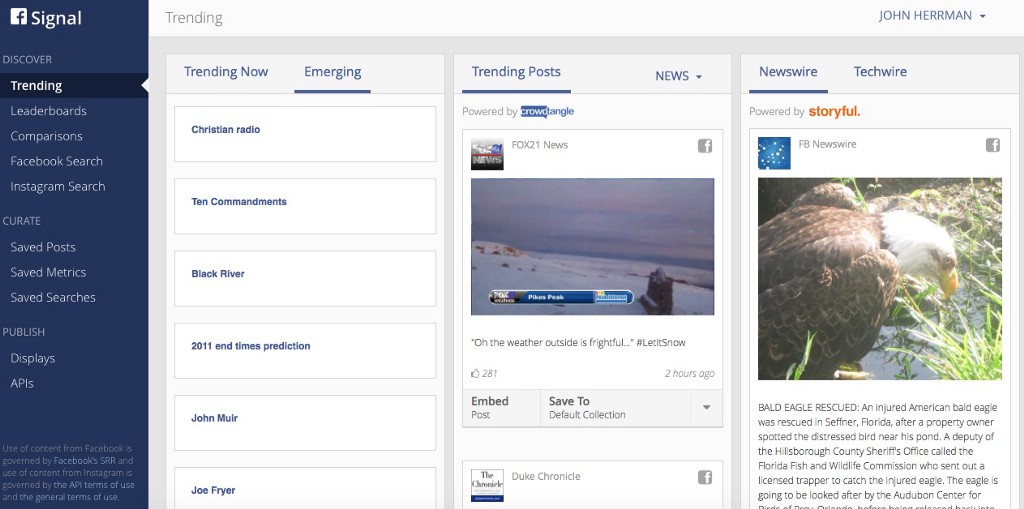
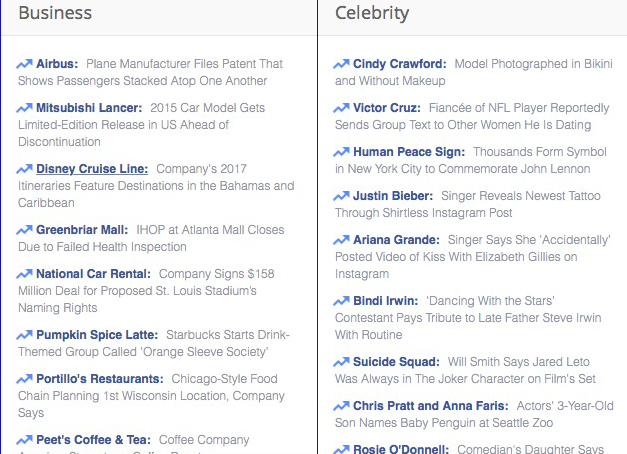
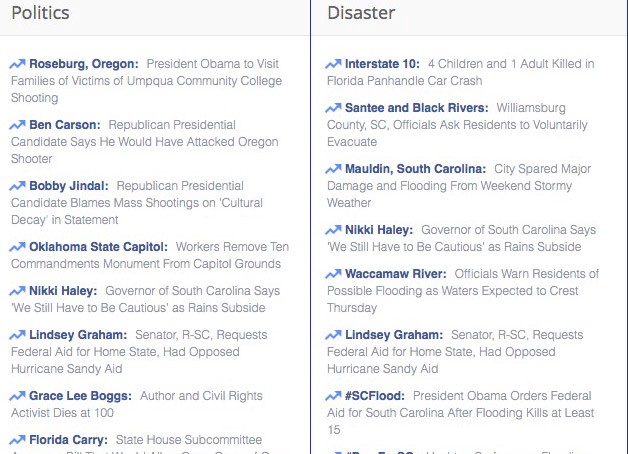
Facebook, with a small team of editors, could turn this information into an app-level publication with no problem at all. They haven’t yet, unless you count Paper, which dealt with many of the same challenges Moments will face without the benefit of showing up unannounced in the middle of everyone’s primary Facebook apps and just staying there, begging to be read. Maybe they’re under less pressure to do so — shareholders aren’t constantly worried, they haven’t been leaderless for months, activist investors haven’t been going on TV telling them they’re morons. Or maybe they just know better? Signal is Facebook minus context, and Facebook is all about context. Post and videos that do well on Facebook can look utterly bizarre elsewhere — they’re meant to be wielded as expression of identity according to Facebook’s definition of the term. The curiosity gap is pointless in a vacuum.
Facebook is also, despite Twitter’s attempt at a frame-shift, a much larger service in every important way. News is just one more thing people get on Facebook, for now.

The intent of Moments, according to Twitter’s guidelines, is to create “the best experience possible for both consumers of content and those whose content is featured in Moments.” It will no doubt be exhilarating for individuals to have their posts featured in popular Moments, assuming, that is, they know — tweets aggregated into Moments are stripped, at least at first view, of all interactivity. There are no links; favorite and retweet functions are concealed behind a tap. This will be especially concerning to publications, who, absent the level of traffic Facebook sends, have come to love Twitter for other reasons, direct interactivity among them.
Moments is an attempt to annex territory carved out by publications. It represents power intentionally creating redundancy. This is explicit in the service’s terms:
We do not duplicate curated collections or sets of Tweets embedded on a single third-party website, or those retweeted from a single Twitter account.
Twitter will not rip off other curatorial efforts, in other words, with its own. This is necessary to mention because it might be tempting. Twitter curation has been observed as a successful Twitter strategy, and now Twitter is doing it too. Politely!
With each annexation Twitter creates a feeling of betrayal. Programmers and developer types were a major force in early Twitter; the acquisition of Tweetie and subsequent constriction of developer options inspired uproar and even a competing service, App.net, which was advertised as developer-centric. But the developers had served their purpose — Tweetie was turned into the Twitter app, and Twitter grew. The developers still tweet, but few of them are still making money from Twitter. They’re just users again.

If developers overestimated their worth to Twitter, so have journalists and the companies they work for; the same people who wrote Twitter’s previous power narratives. In their capacity as indirectly compensated professional Tweeters, journalists have — extremely unevenly — made Twitter a better place to keep up with not just people but… things?
They — we — did this because of a temporary alignment of goals. Twitter had a network, and tweeting helped you gain access to it. Performing the identity of a reporter or pundit on Twitter helped you gather a following; doing the work of reporting or punditry helped drive that audience to a site, which maybe sent you a paycheck. Twitter asserted itself as such a vital tool for news that ignoring it wasn’t an option, but also felt like an opportunity: to build and maintain and eventually monetize an audience of extremely interested people. A constantly expanding platform is an intoxicating context; it creates within itself a simulation of its own extreme growth and infinite potential, and the corresponding feeling that it will all culminate in some sort of exit or victory. Individuals and organizations sought opportunity in Twitter’s walled market, finding audiences of millions by curating and re-centralizing the bountiful products of Twitter’s vast and productive chaos.
But enough success on another company’s platform eventually, perhaps inevitably, represents to that platform a problem to be solved, an opportunity left to someone else, or at least an activity under-supervised. In a bottom-up Twitter, CNN’s millions of followers across multiple accounts are a triumph of news aggregation and Twitter utility; from the top down, they’re the best of a duplicative bunch, perhaps most eligible to be included in Moments, but most useful as an example to be learned from and maybe replaced.
Victory, for a publisher, is reduced to the ability to ask for partnerships, or for mercy, and the ability to secure them for a time. The space they inhabit is no longer open and ever-expanding. There is no Moments “strategy” for a third party without Twitter’s full and constant cooperation.
If there is comfort for publications here, it’s in Twitter’s lack of curatorial and — this may matter eventually — reportorial expertise and flexibility. Twitter knows it has a network, and it knows they like to look at stuff, and it knows there’s an opportunity in supplying that stuff, but that’s about it. There is a conceivable future in which Twitter, and other platforms, decide that the ability to create a Moments-like product doesn’t mean it’s worth the resources or liability, and they cede some control — of the editorial product, not the platform in general — back to partners who are better equipped to make the most of it; it’s already letting some organizations create and submit moments of their own. It works for TV, sort of! Comcast and Time Warner only directly produce some of the programming in their cable packages. Or more recently: YouTube partners with thousands of video producers, but doesn’t seem to want to render them obsolete. Production is risky and expensive; better, in their minds, to leave it to others. How sad when they fail. But how free! And when they succeed, they do it on Google’s terms. They give their cut.
But of course Twitter is different, maybe totally. What makes this interesting is that it’s not clear the company knows exactly how. Nobody knows anything! The content people are platform naifs and the platform people are often content morons. This is not about asymmetry of vision or ability; it’s about overlapping interests amidst asymmetry of power — about a mutual realization that audiences are, for the moment, determined not only by geography or demography or subscription but by social networks’ pungent brew of all three. Twitter doesn’t know where this is going. If there is a master plan, it’s contingent on whether or not people like and use Moments in any sort of consistent way, and it’s subordinate to the master master plan, which also may not exist, for dealing with its own parent platforms, and for avoiding the bloated, boring fates of portals past.
For now, their only coherent message to the rest of us is this: Thank you for your service, it’s been really great. And don’t feel bad! It Not You. It Me.
Nicolas Jaar, "Fight"
Joy is the name we give the fleeting moment when we somehow forget how unhappy we are. This is why we spend so much time seeking out distraction. Anything that prevents us from remembering what life is like when we’re paying attention is worth whatever price we pay to clutch it to our chest for even a second or two. There is so much happening in the eight minutes of this track that I wouldn’t know what to call out, but I promise you that there is at least a brief bit somewhere within that will take your mind off of how awful everything is, if only for a moment. That might just have to be enough. Enjoy. [Via]
